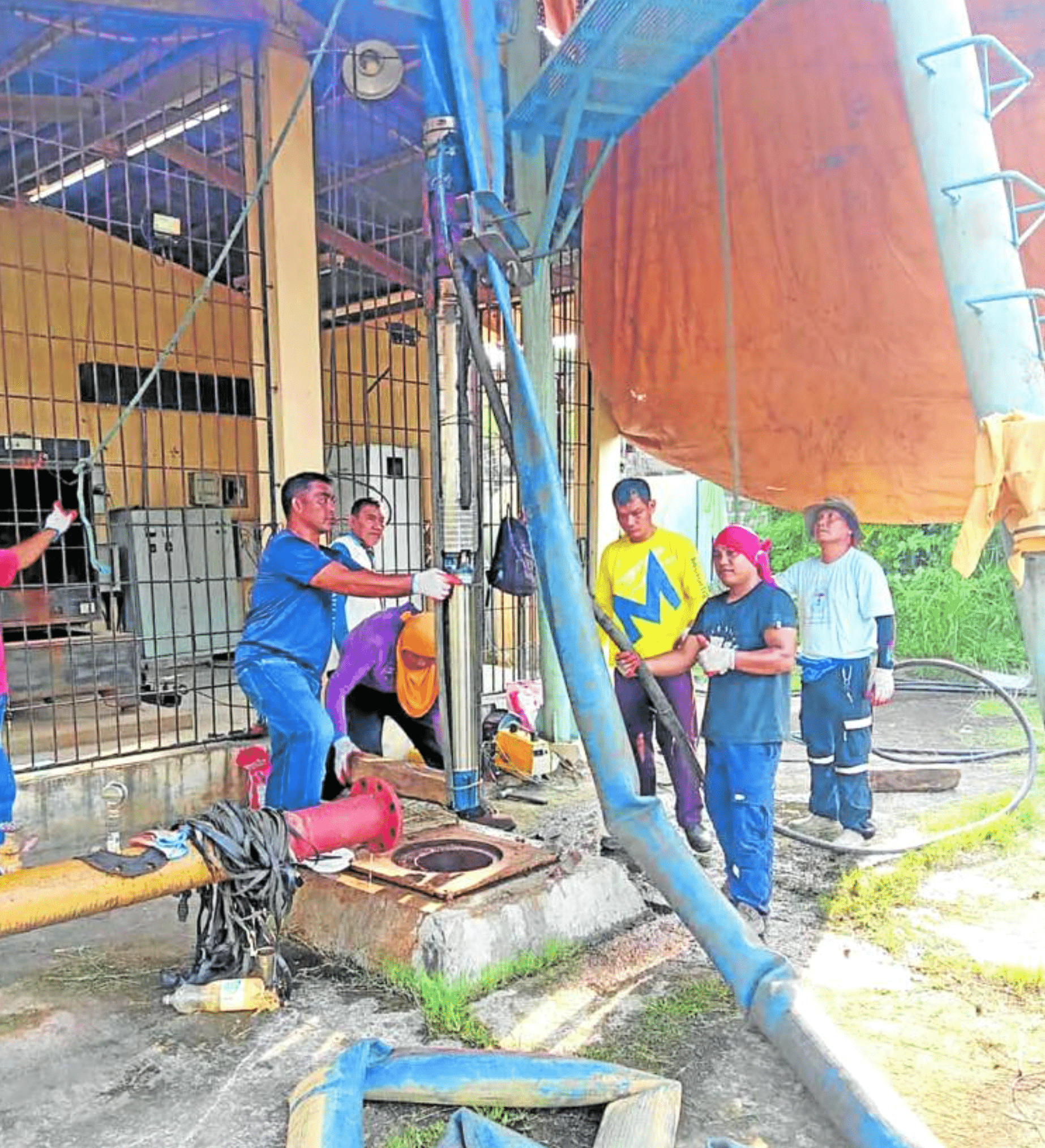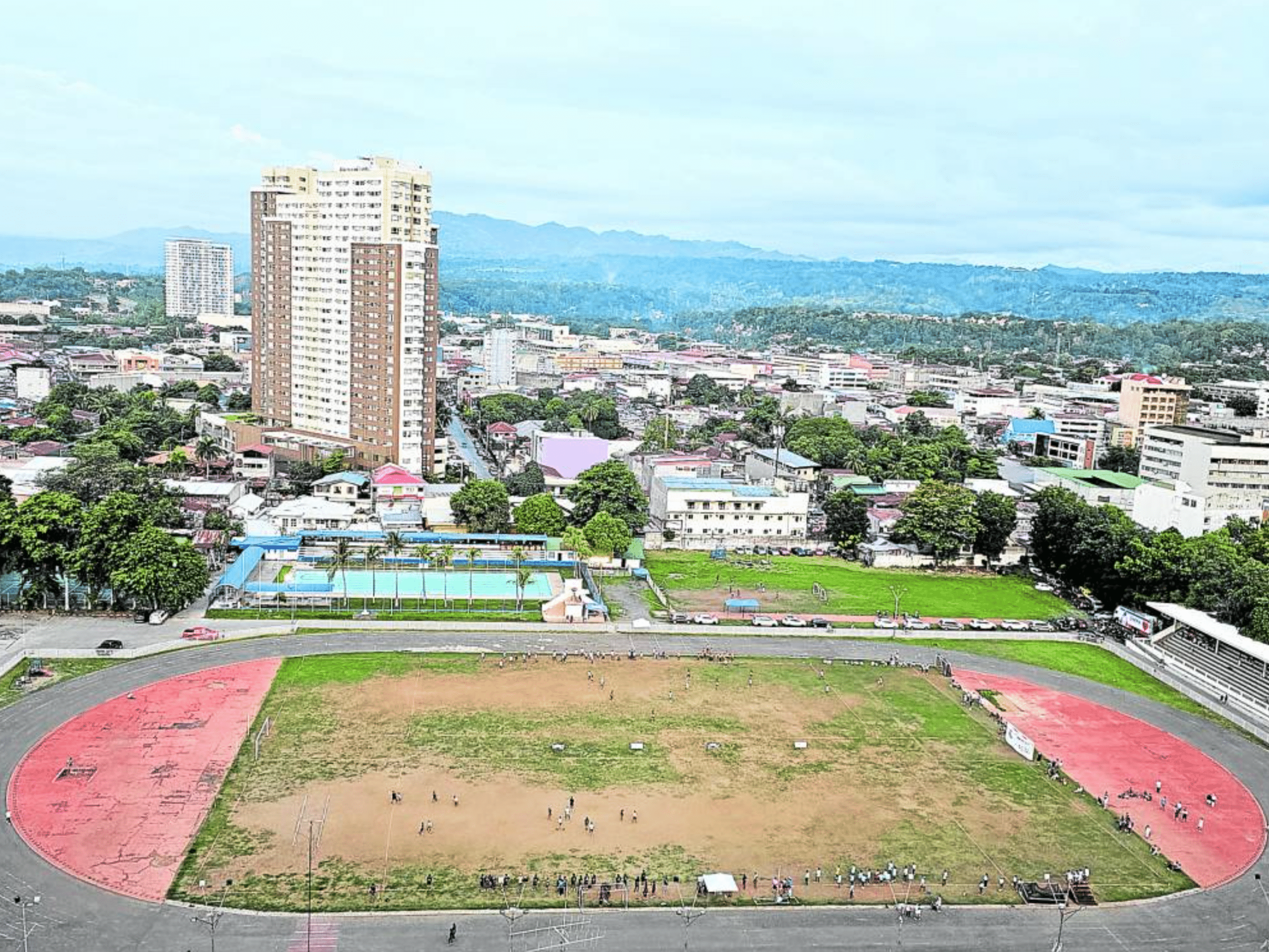Cagayan de Oro needs P6.7B to fix water woes

SERVICE IMPROVEMENT Workers, as shown in this October 2024 photo, repair a production well of Cagayan de Oro Water District (COWD) as the utility improves its services to households and businesses in Cagayan de Oro City and nearby areas. —PHOTO COURTESY OF COWD
CAGAYAN DE ORO CITY— The bill for fixing this fast-growing highly urbanized city’s water problems is a whopping P6.7 billion in the next five years.
According to Fermin Jarales, interim general manager of Cagayan de Oro City Water District (COWD), a big portion of the required investment will go to replacing the city’s aging water pipes, many of which were laid out some 49 years ago.
“That’s half a century ago and these pipes are still in service, hence, it is not a surprise that we have a problem of low billed volume for the water that we distribute to concessionaires because these are lost to leaks,” Jarales told the Inquirer.
COWD is the first water district to be established in the country under the Provincial Water Utilities Act of 1973. It took over the management of the City Waterworks System that had 3,500 service connections.
Today, it has some 180,000 service connections in 75 of 90 villages of this regional capital of Northern Midanao, nearby Opol town in Misamis Oriental, and a village in nearby Tagoloan town, also in Misamis Oriental.
Article continues after this advertisementExpansion
COWD’s funding needs to be carefully considered not just for the rehabilitation of its facilities but also the expansion of transmission and distribution pipelines so that it is able to effectively serve the growing demands in its franchise area.
Article continues after this advertisementWith a population of 728,402 based on the 2020 Census, Cagayan de Oro accounts for at least half of the 1.4 million people in a shaping metropolitan area comprising 15 other nearby localities in Misamis Oriental and Bukidnon provinces.
The Philippine Development Plan 2017 to 2022 cited this area as the fourth upcoming metropolitan center in the country “based on its projected population growth and functional role as a major gateway and transshipment hub in Northern Mindanao.”
The city’s water problems hogged national attention in May last year when its bulk water supplier cut off supply on account of a supposed debt amounting to some P426 million. This prompted President Marcos to intervene.
The Local Water Utilities Administration (LWUA) installed an interim management setup in COWD for six months starting in May last year, and had it extended by another three months to ensure that the needed reforms are carried out.
At present, at least half of COWD’s water production is not billed, mainly due to wastage from leaks of old pipes as well as pilferage. Its 34 production wells produce 100 million liters per day while two bulk water suppliers deliver a combined 84 million liters.

BUSTLING This June 2024 photo shows the skyline of Cagayan de Oro City, which is fast growing into the country’s fourth metropolitan area, imposing greater demand for basic services, such as potable water supply. —RYAN D. ROSAURO
Operational losses
Jarales said the water utility had been bleeding from years of mismanagement, incompetence and gross neglect by its officials, resulting in the pileup of operational losses.
Add to this the poor collection efficiency as evidenced by dormant receivables of some P987 million, Jarales pointed out. He also lamented at an audit finding of 101 projects that were either unimplemented or unfinished despite the lapse of eight years, some of which could have addressed the problem of nonrevenue water (NRW) or water losses.
Interim board chair Antonio Ramirez said there was a need to address these issues to ensure sustained revenue generation for COWD.
About 90 percent of COWD’s current clients, Jarales noted, are residential connections and small establishments, leaving large businesses to produce their own water supply.
“We have to double our efforts of rehabilitating our system as we need to provide for the water needs of a growing city, a fast-growing one. That is the significance of us coming up with a business development plan, an important document that COWD does not have in the last four years,” Jarales said.
Through its five-year business development plan, which was approved by the interim board last month, COWD hopes to lower NRW from the current 52 percent to just 25 percent in five years.
READ: ‘City of Golden Friendship’ a rising metropolis
To fund its P6.7-billion requirement, Jarales is eyeing a mix of grants from the national government for capital expenditures, loans, issuance of bonds and performance-based partnerships with the private sector.